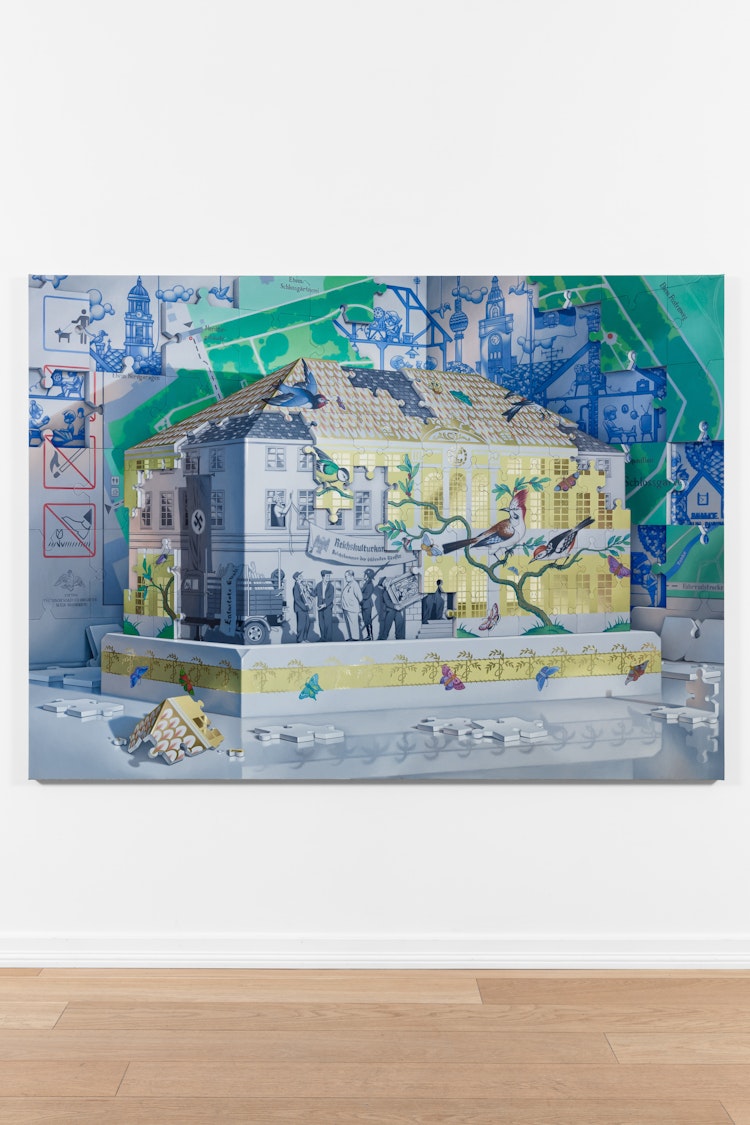Bjørn Båsen acquired by Equinor Art Programme


Bjørn Båsen's work "Chronicle (Pankow)" have been acquired by Equinor Art Programme.
The work was exhibited in Mirrorscape at QB Gallery in September 2024 and at Enter Art Fair 2025.

The painting depicts Schloss Schönhausen in Berlin and four different layers of the palace's history. Bjørn Båsen lived in Berlin for six years during the 2010s, two of which he was based in the Pankow area, where Schloss Schönhausen is located.
The building is most famous for being the residence of Queen Elisabeth Christine von Brunswick-Wolfenbüttel-Bevern, the wife of Prussian King Frederick the Great. King Frederick was known to be actively homosexual and mostly resided in another palace, where women were reportedly not allowed to enter. Queen Elisabeth is known for being a strong female leader who, in her husband’s absence, took monarchical control of the country. The painting's outermost layer, featuring birds, is inspired by her breakfast china.
In the 1930s, the building was used by the Nazi Party to store so-called Entartete Kunst—modernist art that the Nazis deemed degenerate. In the painting, one can see a work by Picasso being carried in under the watchful eye of Nazi General Hermann Göring.
Schloss Schönhausen is in East Berlin, and after the war it was used as the headquarters for the communist regime in East Germany (DDR). In the background of the painting, one can see the Stasi's surveillance of the population, here inspired by communist children's book illustrations.
Today, Schloss Schönhausen is a museum showcasing parts of the building’s history. In the painting, one can see a map of the palace park, which today can be used by visitors—bicycle paths, "do not step on the grass," etc.—organized features often associated with modern Germany.
The painting raises questions about which parts of history one wishes to remember and which to forget. Today’s Berlin focuses much more on its early glory days, Prussia in the 1700s, than on its more problematic periods in the 20th century. Thus, Båsen has placed the 18th century and the present in the outer layers, while the 1930s and the Cold War are depicted in more muted tones in the underlying layers. For Båsen, the painting of Schloss Schönhausen represents both German and European history and our interpretation of it.

What are you looking for?